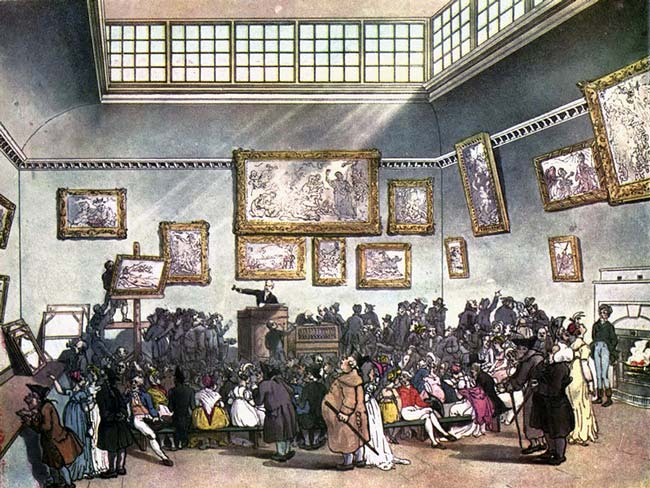
“Deaccessioning—the permanent removal of objects and/or art from a museum’s collection—has been at the forefront of many discussions of museums of late,” notes Bob Beatty in Hyperallergic. Some cases have met with the approval of the American Alliance of Museums, as NPQ’s Eileen Cunniffe notes, such as this past April when the Baltimore Museum of Art announced its intent to sell “seven works by white male artists, including Andy Warhol and Robert Rauschenberg, in order to make room for more art by contemporary female artists and artists of color.”
Other cases, however, have been highly controversial. Notably, the Pittsfield, Massachusetts-based Berkshire Museum’s decision to sell art, although approved by the state attorney general’s office and upheld in court, was seen by the arts community to be a direct violation of the field’s ethical and professional standards, which “prohibit a museum from using the proceeds from sales of art to fund anything other than new acquisitions.”
There is no doubt, certainly, that the Berkshire Museum’s New Vision plan, which involves “building on the Museum’s focus on science and history” violates that standard. But is the current standard the right one to have? If rules against deaccessioning did not exist, Cinnamon Catlin-Legutko warns in Museum Administration 2.0, the collection would appear to be “a cash reserve to be used anytime it is needed.” Beatty agrees that keeping museum art off the market is crucial, but he suggests there may be better ways to achieve that goal.
The matter is important, Beatty adds, because regardless of whether the Berkshire Museum board made the right call—as NPQ has reported, dissenters in Pittsfield included two former board members—it is not a unique case.
Nina Simon, executive director of the Santa Cruz Museum of Art and History, writes in her Museum 2.0 blog that in some cases, the current standard may achieve the opposite of its goal and actually encourage the sale of museum art to private collectors. As Simon explains:
Sign up for our free newsletters
Subscribe to NPQ's newsletters to have our top stories delivered directly to your inbox.
By signing up, you agree to our privacy policy and terms of use, and to receive messages from NPQ and our partners.
The inflexible rule on deaccessioning forces them [the Berkshire Museum board] into an all-or-nothing choice. Right now, there is no “ethical” vehicle by which a museum might sell high-value artifacts for any purpose other than to buy and protect other artifacts. An institution like the Berkshire Museum risks professional censure whether they sell a painting on the open market or to another museum—assuming they plan to use the proceeds to fund their New Vision. Why wouldn’t they make the rational choice to get as much money as possible for their sins?
As Mary Baily Wieler of the Museum Trustee Association wrote shortly after the New Vision plan was released, the field needs to consider whether it is “saying that museums are ethically bound to continue ‘business as usual’ and never change their missions?”
The worry, of course, is that once you acknowledge that museum boards may adjust their missions to meet community needs, a free-for-all might emerge. Worse, others may demand that a museum sell art for other purposes, such as to pay off debts—as creditors tried to force the Detroit Institute of Art to do a few years ago.
Simon, for her part, believes that responsible alternatives exist. She notes, “Accredited American zoos…have a strict policy that governs how animals move from one institution to another. If your zoo no longer plans to exhibit giraffes, those giraffes don’t suddenly become fungible assets on the open market. They become tradeable assets within a controlled market—with other accredited zoos, who will care for the giraffes as well as you once did.”
If the art world adopted this approach, art sale income would face fewer restrictions, but on the condition that the art is sold to other museums rather than at auction. While the Berkshire settlement imposed this condition on one key artwork, Norman Rockwell’s Shuffleton Barbershop, which was purchased by the Lucas Museum of Art, the remaining artworks are being sold by Sotheby’s.
Writing in ArtNet, Adrian Ellis has suggested a similar alternative standard: “A museum selling a work should ensure that the institution or individual to which or whom the work is sold commit in some binding form to equal or higher conservational standards and equal or higher public access to the work in question.” In return, Ellis adds, “The museum should be able to exercise appropriate discretion with respect to how it spends or invests the proceeds of the sale, and specifically, should not be required to use it solely for the acquisition or conservation of art.”—Steve Dubb












